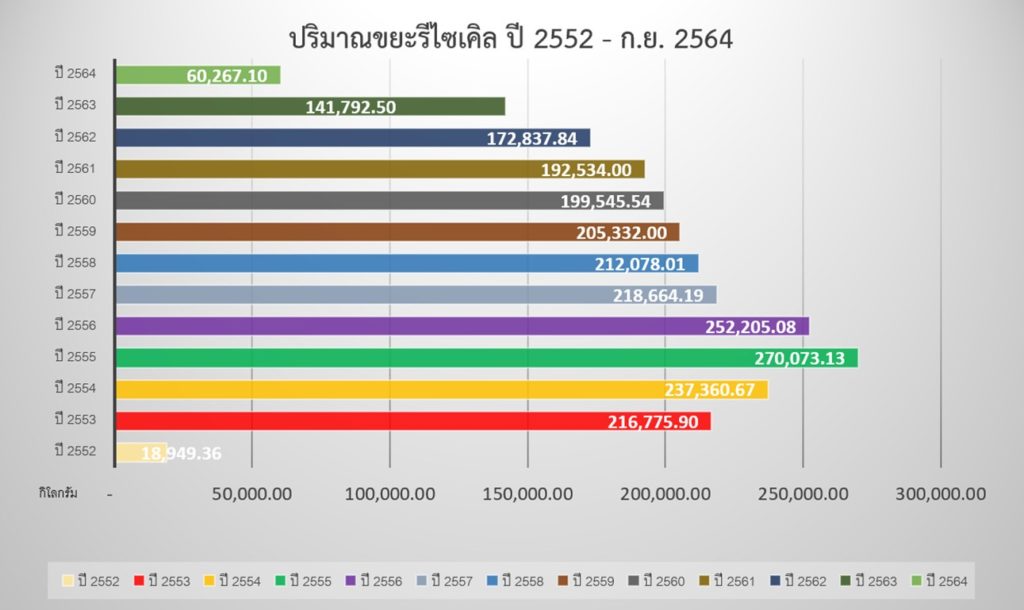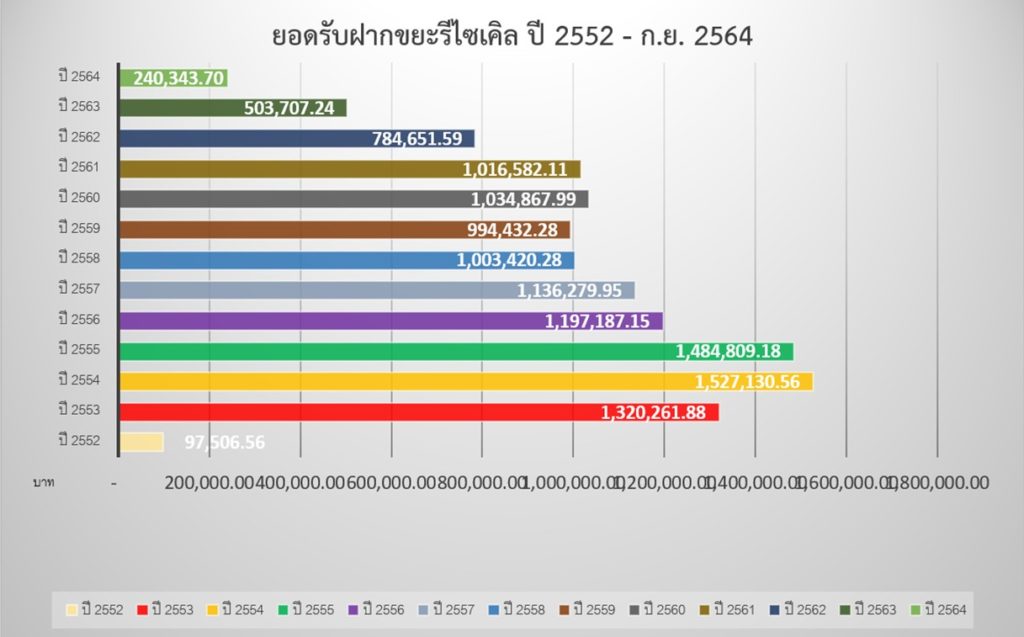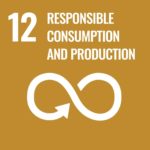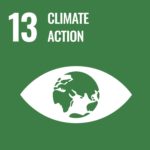(Recycle Waste Bank Project)
Recycle Waste Bank Project

Mahidol University developed the first master plan for area development in 1974 and the master plan was revised in 1992. In recent decades, a number of factors have disrupted this plan, including external factors, the economy, society, roles and needs for the university’s development, as well as land use requirements to fulfill the missions of various faculties, colleges, and institutes. Thru overcoming obstacles in a variety of areas, the university implemented the “Clean and Clear” project in 2008, along with the “Recycled Waste Bank Project” in 2009 to encourage students and staff to reduce the waste and reorganize for more value-added purpose. To implement the recycling waste bank project, the Environmental Conservation Building has been served as the project headquarter, utilizing software systems and recycling waste bank programs, similar to those of the commercial banks, to collect information and to promote transparency and reliability.
Members of the university’s Recycled Waste Bank and visitors are welcomed to exchange separated and recycled waste into money and they can freely deposit or withdraw the money using the passbooks. For those who are interested in joining the Recycled Waste Bank, please drop by at the following places according to the date and time below:
¬ Environmental Conservation Building: Every business day from 8:00 a.m. – 3:30 p.m.
¬ Badhanatala Environmental Building: Only on Thursdays from 8:00 a.m. – 11:30 a.m.
Subscription and Services
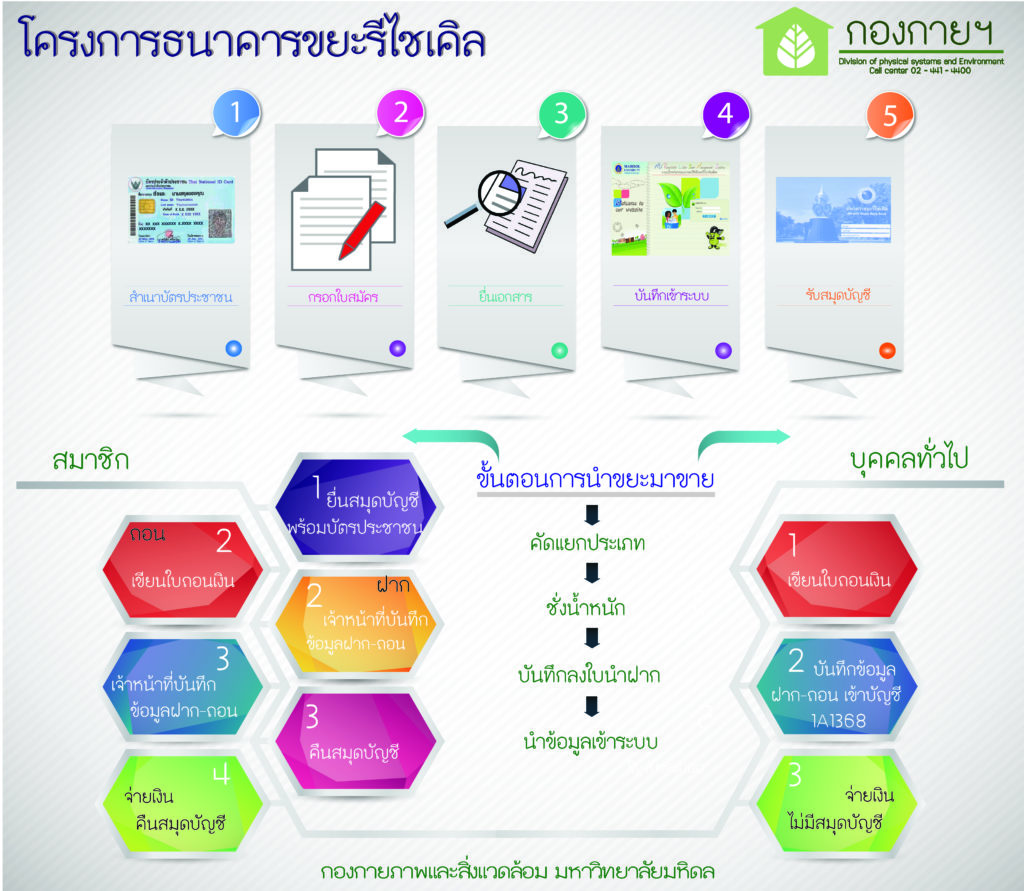
The purchase price of recycled waste
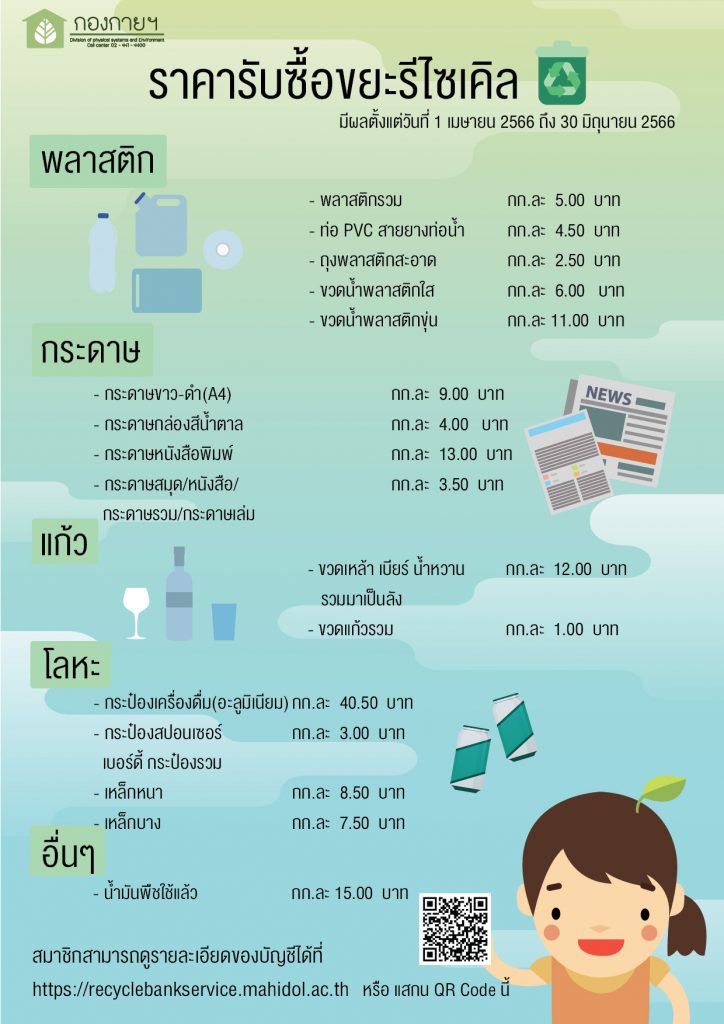
From 2009 – 2021, the Recycled Waste Bank accommodated 2,377 internal members and 5,000 general members, generating a total amount of recycled waste of 2,136,627.58 Kilograms, a total purchase of recycled waste of 11,040,730.97 Baht and 10% profit from sales of recycled waste. The 10% profit of 1,784,635.63 Baht was later deposited into the Environmental Conservation Fund, Mahidol University.
